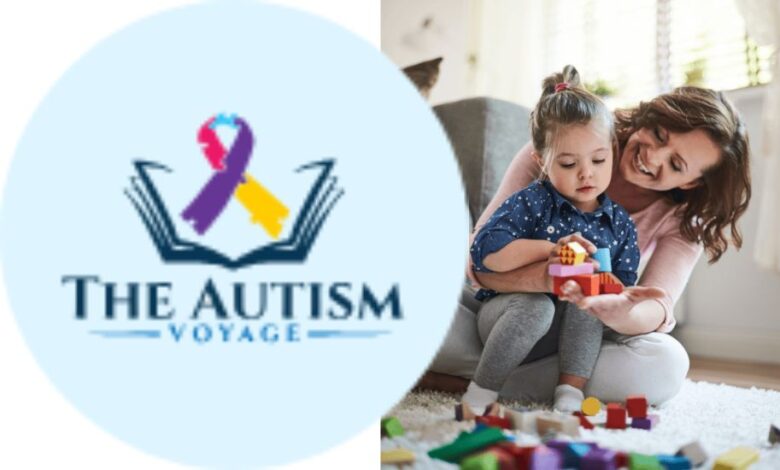ASD Support for Parents: Tools, Tips & Community Help

Many parents of children with Autism Spectrum Disorder feel lost and stressed. Studies show that early support can help families manage better at home. This post will share simple tools, helpful tips, and places to find support with autism challenges.
Keep reading to learn how you can make daily life easier for your family.
Essential Tools for Parents of Children with ASD
Parents of children with ASD need the right tools to help their kids thrive. These resources can make daily life smoother and support their unique needs.
Visual schedules and communication devices
Visual schedules help children with Autism Spectrum Disorder know what will happen next. Using pictures or symbols, these tools show daily routines step by step. Children feel less stress and gain confidence as they follow clear plans for the day. Many parents use apps like Choiceworks or Boardmaker to build custom visual schedules at home.
Communication devices support children who have trouble speaking or understanding words. Tools such as speech-generating tablets and PECS (Picture Exchange Communication System) let kids share their needs and feelings without talking. Sensory-friendly products offer more comfort for kids during their activities.
Sensory-friendly products
Noise-canceling headphones can help block loud sounds for children with Autism Spectrum Disorder. Soft clothing without tags or seams often helps reduce irritation and discomfort. Many families use weighted blankets to provide a calming effect during rest or sleep, which supports emotional regulation. Fidget toys and sensory balls are simple support tools that help kids focus better by keeping their hands busy.
Lighting in the home makes a big difference; using soft lights instead of bright ones creates a calmer space. Special chewable jewelry lets children satisfy oral needs safely, supporting both behavior management and self-soothing skills.
Sensory-friendly products are now widely available at stores like Target and Walmart as well as online shops such as Amazon. These items offer caregiver assistance while helping meet each child’s unique sensory needs every day.
Online therapy platforms
After trying sensory-friendly products, parents can explore online therapy platforms as another strong support tool. These platforms connect families with licensed therapists who understand Autism Spectrum Disorder and behavior management.
Services such as telehealth, speech therapy, and occupational therapy are easy to access from home. Well-known resources like Talkspace, Amwell, and PresenceLearning offer appointments at flexible times.
Online options help parents manage stress by saving travel time. Some insurance plans cover sessions on these sites starting in 2020. Many also provide parent coaching or caregiver guidance for emotional regulation and social skills development for children with ASD. These tools support family goals while giving consistent developmental support wherever you live.
Practical Tips for Parenting a Child with ASD
Creating a consistent routine can help your child feel secure. Use positive reinforcement to celebrate their small successes and encourage good behavior.
Building routines and structure
Building routines and structure helps children with ASD feel safe and secure. Clear schedules can make everyday life easier for both kids and parents.
- Use visual schedules. They can show activities for the day. Simple pictures or icons help children understand what to expect.
- Set specific times for daily tasks. Having a consistent routine provides a sense of order. This helps reduce anxiety in children with autism.
- Keep transitions simple. Prepare your child before moving from one activity to another. Give warnings, like “five more minutes,” to help them adjust smoothly.
- Stick to regular meal times and bedtimes. Consistent eating and sleeping patterns aid emotional regulation in children with ASD.
- Create a calm-down area at home. Designate a quiet space where your child can relax when feeling overwhelmed.
- Reward following routines with praise or small incentives. Positive reinforcement encourages good behavior and builds family goals together.
- Prepare social stories for new situations or changes in routine. These short narratives help explain what will happen, easing fears about the unknown.
- Involve your child in creating schedules when possible. Letting them choose some activities gives them a sense of control and promotes engagement.
- Write down rules clearly and display them at home, promoting behavior management during challenging moments.
- Regularly review the schedule with your child and update it as needed; this keeps everyone on track and reinforces daily structure.
Positive reinforcement strategies
Positive reinforcement helps children with ASD feel motivated. It encourages them to display good behavior.
- Praise immediately after a positive action. This shows that you notice their good efforts.
- Reward small achievements with small treats or fun activities. This keeps them engaged and eager to learn.
- Use stickers or tokens as rewards for completing tasks. Kids enjoy collecting these, which makes them excited about following rules or routines.
- Share specific feedback when they do something well. Phrases like “Great job sharing” help reinforce the exact behavior you want to see again.
- Be consistent in your rewards and praises; this builds trust and understanding of expected behaviors.
- Set clear goals for what behaviors earn rewards. Knowing what leads to success can motivate children to try harder.
- Allow them to choose their own rewards sometimes; this gives them a sense of control and boosts their excitement.
- Create a visual chart showing progress toward goals; this provides motivation as they see how far they have come.
- Celebrate not just big wins but also small steps along the way; every little success counts in building confidence.
- Involve other family members in reinforcement strategies; everyone should support the same goals for best results.
These strategies strengthen emotional regulation and improve behavior management in children with ASD while forming closer family bonds through collaboration and teamwork.
Managing stress and self-care
Managing stress and self-care is vital for parents of children with ASD. Taking care of yourself helps you care better for your child.
- Set aside time each day just for you. Simple activities like reading or taking a walk can reduce stress.
- Connect with others who understand your situation. Talking to fellow parents offers support and shared experiences.
- Reach out to local support groups. These groups provide helpful tips and a safe space to share feelings.
- Use online resources for quick advice and strategies. Many websites offer articles, videos, and forums suitable for parents of children with ASD.
- Practice mindfulness techniques daily, such as deep breathing or meditation. These methods are effective in managing anxiety and improving emotional regulation.
- Create a balanced routine that includes time for work, family, and relaxation. Structure helps reduce chaos and supports family goals.
- Don’t hesitate to seek professional help if needed. Counselors or therapists can provide guidance suited to your family’s needs.
Finding ways to manage stress will improve your well-being as you support your child with an autism diagnosis. Community support can also be beneficial in this journey toward progress.
Community Support for Parents
Community support is vital for parents of children with ASD. Many local groups offer a safe space to share and learn. Online forums connect you with others facing similar challenges.
You can find emotional support and helpful advice from fellow parents. These resources help build strong connections in your journey. Explore these communities today!
Local support groups and meetups
Local support groups and meetups offer valuable connections for parents of children with ASD. These gatherings provide a chance to share experiences and advice.
- Meet other parents who understand your journey. Sharing stories can ease feelings of isolation.
- Gain insights from others who have faced similar challenges. You can learn effective strategies and approaches to parenting.
- Attend local events to participate in workshops or discussions. These sessions often feature experts sharing knowledge on behavior management or emotional regulation.
- Find ASD resources for parents dealing with autism diagnosis. Many groups share helpful information about educational tools and therapies available in the community.
- Build a network of friends who can offer support during tough times. Having people who care makes parenting easier and more rewarding.
- Connect with local organizations that focus on ASD advocacy. They often provide updates on events, services, and resources relevant to your needs.
- Join online forums linked to your local support group for continuous connection. This allows you to stay informed even when you cannot attend meetings in person.
Finding local support groups can make a significant difference in handling the unique challenges of raising a child with ASD. These resources help strengthen family goals and foster collaboration among caregivers.
Online forums and social media communities
Moving from local support groups and meetups, online forums and social media communities offer valuable help for parents of children with ASD. These platforms connect families, providing them with resources and support.
- Online forums let parents share experiences and advice. They offer a safe space to discuss challenges and find solutions together.
- Social media communities allow quick access to tips and information. Parents can join groups dedicated to autism support.
- Many parents post questions or concerns in these online spaces. Responses often come from other experienced caregivers who understand the journey.
- Information about events and resources is frequently shared by members. This helps families stay updated on new tools, strategies, and opportunities.
- Advocacy organizations often use social media to reach a broader audience. They share educational content that helps raise awareness about autism.
- Parents can find emotional support through shared stories on these platforms. Reading how others cope can inspire hope and resilience.
- Valuable links to articles, videos, and webinars are often posted. These resources improve understanding of ASD and enhance parenting skills.
- Engaging in discussions can lead to lasting friendships among parents. Building connections gives a sense of community, reducing feelings of isolation.
Online forums and social media communities serve as important tools for any parent managing their child’s autism diagnosis. Such online spaces provide essential support that improves emotional regulation for both caregivers and their children.
Advocacy organizations and resources
Online forums and social media communities can connect parents. Advocacy organizations and resources play a crucial role in supporting families.
- Autism Society offers information and support for families dealing with autism. They provide local chapters, resources, and events for parents.
- The National Autism Association focuses on safety and support for children with ASD. They provide materials, training, and community outreach.
- Autism Speaks provides resources to help families navigate autism. Their advocacy efforts include fundraising for research and public awareness campaigns.
- ADDA (Attention Deficit Disorder Association) offers guidance for managing ADHD alongside ASD. They share tools, strategies, and community connections.
- Asperger/Autism Network gives resources specifically for those with Asperger’s Syndrome. They aim to empower individuals through education and support.
- The Council of Parent Attorneys and Advocates helps parents understand their rights in school systems. They focus on legal advocacy for children with disabilities.
These organizations assist families with information, advocacy, and community support. Finding the right resource can make a difference in the journey of raising a child with ASD.
Conclusion
Supporting a child with ASD takes effort and heart. With the right tools, tips, and community help, parents can find balance. Resources like visual schedules and local support groups can make a big difference.
Seeking help builds strength for both parents and children. Together, we can create a brighter future for our families.

